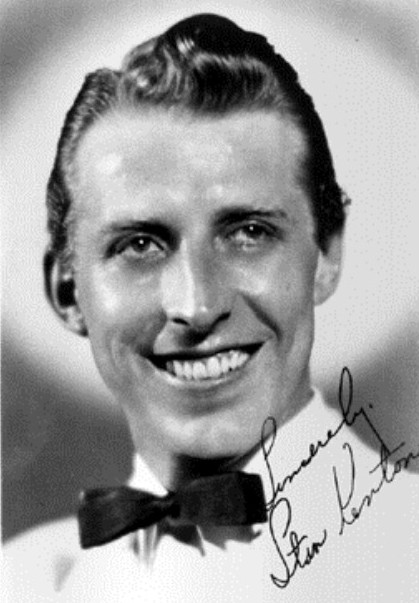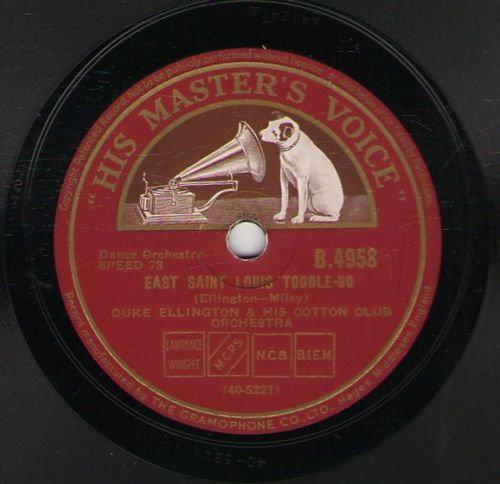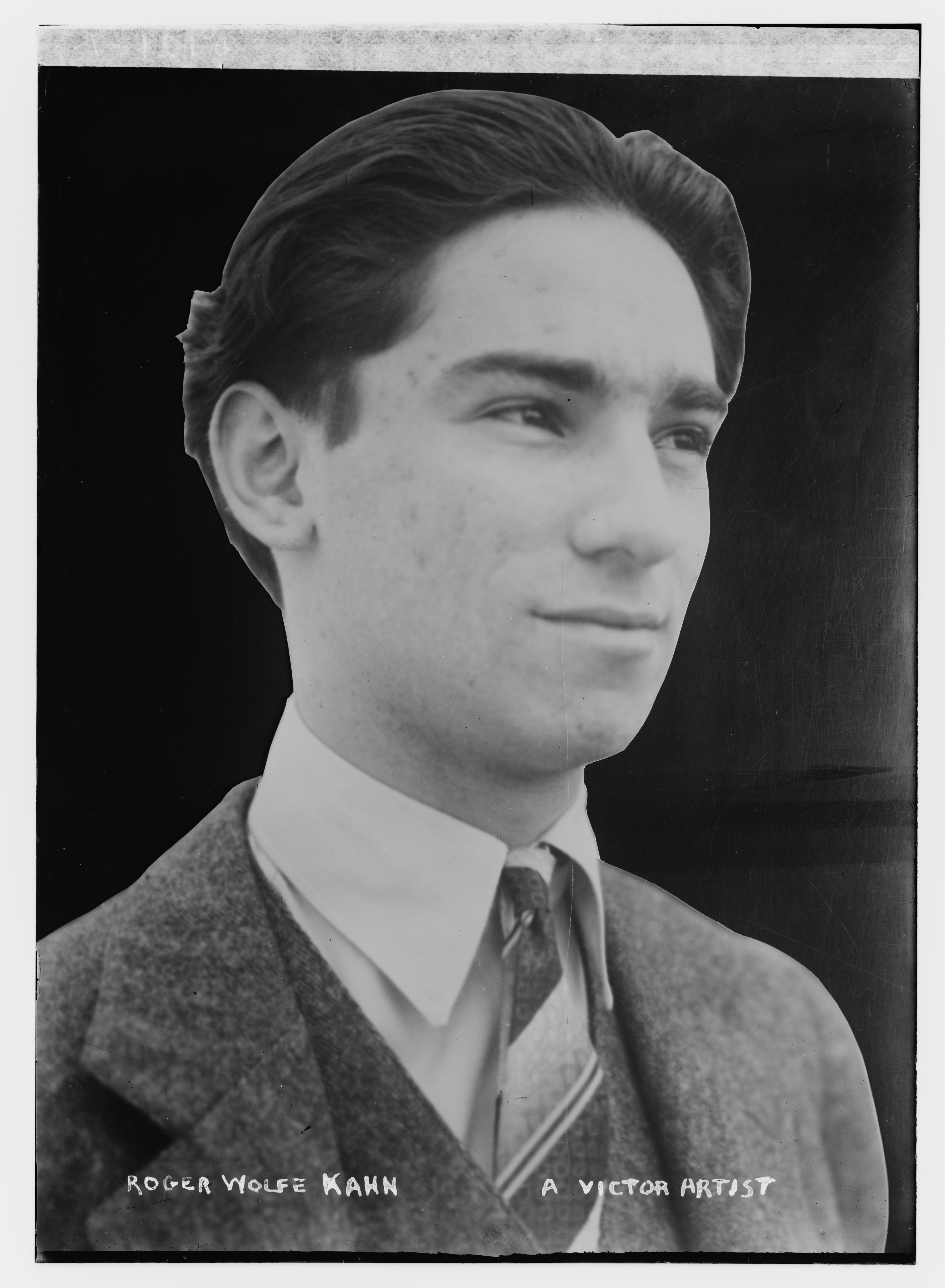|
Portraits On Standards
''Portraits on Standards'' is an album by pianist and bandleader Stan Kenton with featuring performances of jazz standards recorded in 1953 and originally released on the Capitol label as a 10-inch LP.Vosbein, PStan Kenton Discographyaccessed April 11, 2016 Critical reception The Allmusic review by Scott Yanow noted "While most of Stan Kenton's recordings in the 1950s tend to be complex and sometimes bombastic, his versions of standards could often be sentimental and very melodic" and said the music "alternates between ballads and boppish romps, mostly featuring the 1953-1954 orchestra, a band that could often swing hard". Track listing # " You and the Night and the Music" (Arthur Schwartz, Howard Dietz) - 2:43 # "Reverie" ( Claude Debussy) - 2:56 # "I've Got You Under My Skin" ( Cole Porter) - 2:53 # " Autumn in New York" (Vernon Duke) - 2:41 # " April in Paris" (Duke, Yip Harburg) - 2:53 # "How High the Moon" ( Morgan Lewis, Nancy Hamilton) - 2:22 # "Crazy Rhythm" (Irving Caes ... [...More Info...] [...Related Items...] OR: [Wikipedia] [Google] [Baidu] |
Stan Kenton
Stanley Newcomb Kenton (December 15, 1911 – August 25, 1979) was an American popular music and jazz artist. As a pianist, composer, arranger and band leader, he led an innovative and influential jazz orchestra for almost four decades. Though Kenton had several pop hits from the early 1940s into the 1960s, his music was always forward-looking. Kenton was also a pioneer in the field of jazz education, creating the Stan Kenton Jazz Camp in 1959 at Indiana University.Sparke, Michael. ''Stan Kenton: This is an Orchestra.'' UNT Press (2010). . Early life Stan Kenton was born on December 15, 1911, in Wichita, Kansas; he had two sisters (Beulah and Erma Mae) born three and eight years after him. His parents, Floyd and Stella Kenton, moved the family to Colorado, and in 1924, to the Greater Los Angeles Area, settling in suburban Bell, California. Kenton attended Bell High School; his high-school yearbook picture has the prophetic notation "Old Man Jazz". Kenton started learning pian ... [...More Info...] [...Related Items...] OR: [Wikipedia] [Google] [Baidu] |
Yip Harburg
Edgar Yipsel Harburg (born Isidore Hochberg; April 8, 1896 – March 5, 1981) was an American popular song lyricist and librettist who worked with many well-known composers. He wrote the lyrics to the standards "Brother, Can You Spare a Dime?" (with Jay Gorney), " April in Paris", and "It's Only a Paper Moon", as well as all of the songs for the film '' The Wizard of Oz'', including " Over the Rainbow". He was known for the social commentary of his lyrics, as well as his leftist leanings. He championed racial and gender equality and union politics. He also was an ardent critic of religion. Early life and career Harburg, the youngest of four surviving children (out of ten), was born Isidore Hochberg on the Lower East Side of New York City on April 8, 1896.Yip Harburg: Biography from Answers.com Retrieved January 2, 2 ... [...More Info...] [...Related Items...] OR: [Wikipedia] [Google] [Baidu] |
Conte Candoli
Secondo "Conte" Candoli (July 12, 1927 – December 14, 2001) was an American jazz trumpeter based on the West Coast. He played in the big bands of Woody Herman, Stan Kenton, Benny Goodman, and Dizzy Gillespie, and in Doc Severinsen's NBC Orchestra on ''The Tonight Show Starring Johnny Carson''. He played with Gerry Mulligan, and on Frank Sinatra's TV specials. He also recorded with Supersax, a Charlie Parker tribute band that consisted of a saxophone quintet, the rhythm section, and either a trumpet or trombone. Music career Conte was the younger brother of trumpeter Pete Candoli. He was born in Mishawaka, Indiana, United States. During the summer of 1943, while at Mishawaka High School, Secondo "Conte" Candoli sat in with Woody Herman's First Herd. After graduating in 1945, he joined the band full-time, where he sat side by side with his brother Pete in the trumpet section. Conte immediately went on the road, where he stayed for the next ten years, with Herman, Stan Kenton, B ... [...More Info...] [...Related Items...] OR: [Wikipedia] [Google] [Baidu] |
Conducting
Conducting is the art of directing a musical performance, such as an orchestral or choral concert. It has been defined as "the art of directing the simultaneous performance of several players or singers by the use of gesture." The primary duties of the conductor are to interpret the score in a way which reflects the specific indications in that score, set the tempo, ensure correct entries by ensemble members, and "shape" the phrasing where appropriate. Conductors communicate with their musicians primarily through hand gestures, usually with the aid of a baton, and may use other gestures or signals such as eye contact. A conductor usually supplements their direction with verbal instructions to their musicians in rehearsal. The conductor typically stands on a raised podium with a large music stand for the full score, which contains the musical notation for all the instruments or voices. Since the mid-19th century, most conductors have not played an instrument when conducting, ... [...More Info...] [...Related Items...] OR: [Wikipedia] [Google] [Baidu] |
Piano
The piano is a stringed keyboard instrument in which the strings are struck by wooden hammers that are coated with a softer material (modern hammers are covered with dense wool felt; some early pianos used leather). It is played using a keyboard, which is a row of keys (small levers) that the performer presses down or strikes with the fingers and thumbs of both hands to cause the hammers to strike the strings. It was invented in Italy by Bartolomeo Cristofori around the year 1700. Description The word "piano" is a shortened form of ''pianoforte'', the Italian term for the early 1700s versions of the instrument, which in turn derives from ''clavicembalo col piano e forte'' (key cimbalom with quiet and loud)Pollens (1995, 238) and ''fortepiano''. The Italian musical terms ''piano'' and ''forte'' indicate "soft" and "loud" respectively, in this context referring to the variations in volume (i.e., loudness) produced in response to a pianist's touch or pressure on the keys: the grea ... [...More Info...] [...Related Items...] OR: [Wikipedia] [Google] [Baidu] |
Paul Francis Webster
Paul Francis Webster (December 20, 1907 – March 18, 1984) was an American lyricist who won three Academy Awards for Best Original Song, and was nominated sixteen times for the award. Life and career Webster was born in New York City, United States, the son of Myron Lawrence Webster and Blanche Pauline Stonehill Webster. His family was Jewish. His father was born in Augustów, Poland. He attended the Horace Mann School ( Riverdale, Bronx, New York), graduating in 1926, and then went to Cornell University from 1927 to 1928 and New York University from 1928 to 1930, leaving without receiving a degree. He worked on ships throughout Asia and then became a dance instructor at an Arthur Murray studio in New York City. By 1931, however, he turned his career direction to writing song lyrics. His first professional lyric was "Masquerade" (music by John Jacob Loeb) which became a hit in 1932, performed by Paul Whiteman. In 1935, Twentieth Century Fox signed him to a contract to write lyr ... [...More Info...] [...Related Items...] OR: [Wikipedia] [Google] [Baidu] |
Duke Ellington
Edward Kennedy "Duke" Ellington (April 29, 1899 – May 24, 1974) was an American jazz pianist, composer, and leader of his eponymous jazz orchestra from 1923 through the rest of his life. Born and raised in Washington, D.C., Ellington was based in New York City from the mid-1920s and gained a national profile through his orchestra's appearances at the Cotton Club in Harlem. A master at writing miniatures for the three-minute 78 rpm recording format, Ellington wrote or collaborated on more than one thousand compositions; his extensive body of work is the largest recorded personal jazz legacy, and many of his pieces have become standards. He also recorded songs written by his bandsmen, such as Juan Tizol's " Caravan", which brought a Spanish tinge to big band jazz. At the end of the 1930s, Ellington began a nearly thirty-year collaboration with composer-arranger-pianist Billy Strayhorn, whom he called his writing and arranging companion. With Strayhorn, he composed multipl ... [...More Info...] [...Related Items...] OR: [Wikipedia] [Google] [Baidu] |
I Got It Bad (and That Ain't Good)
"I Got It Bad (and That Ain't Good)" is a pop and jazz standard with music by Duke Ellington and lyrics by Paul Francis Webster published in 1941. It was introduced in the musical revue ''Jump for Joy'' by Ivie Anderson, who also provided the vocals for Duke Ellington and His Orchestra on the single Victor 27531. Recordings to reach the Billboard charts in 1941/42 were by Duke Ellington (#13) and by Benny Goodman (vocal by Peggy Lee) (#25). Recorded versions by notable artists *Al Aarons * John "Johnny" Adriano Acea * Cannonball Adderley *Jamey Aebersold * Harry Allen * Carl Anderson *Ernestine Anderson *Ivie Anderson * Susie Arioli * Louis Armstrong *Benny Bailey *Guy Barker *Bruce Barth *Count Basie *BBC Big Band *Tobias Beecher *Madeline Bell * Joe Benjamin *Tony Bennett *Big Miller *Paul Bley *Carolyn Breuer * Marvin Gaye * Charles Brown * Sandy Brown *Beryl Bryden *Kenny Burrell * Charlie Byrd * Donald Byrd *Ann Hampton Callaway * Harry Carney *Benny Carter * Cher - ''B ... [...More Info...] [...Related Items...] OR: [Wikipedia] [Google] [Baidu] |
Roger Wolfe Kahn
Roger Wolfe Kahn (October 19, 1907 – July 12, 1962) was an American jazz and popular musician, composer, bandleader (Roger Wolfe Kahn and His Orchestra) and an aviator. Life and career Roger Wolfe Kahn (originally spelled "Wolff") was born in Morristown, New Jersey, into a wealthy German Jewish banking family. His parents were Adelaide "Addie" (Wolff) and Otto Hermann Kahn, a famous banker and patron of the arts. His maternal grandfather was banker Abraham Wolff. Otto and Roger Kahn were the first father and son to appear separately on the cover of ''Time'' magazine: Otto in November 1925 and Roger in September 1927, aged 19. On 16 August 1926, Time magazine wrote: "''If it is strange that Otto Hermann Kahn, sensitive patron of high art in Manhattan, should have a saxophone-tooting, banjo-plunking, clarinet-wailing, violin-jazzing son, it is stranger still that that son, Roger Wolfe Kahn, has become a truly outstanding jazzer at the perilous age of 18. Roger's ten orchestras, ... [...More Info...] [...Related Items...] OR: [Wikipedia] [Google] [Baidu] |
Joseph Meyer (songwriter)
Joseph Meyer (March 12, 1894 – June 22, 1987) was an American songwriter, who wrote some of the most notable songs of the first half of the twentieth century. Many of his songs were originally written for Broadway musicals. Meyer collaborated with many famous songwriters of the day including Buddy DeSylva, Al Lewis and Al Sherman. Three of his most famous songs were the 1922 hit, "California, Here I Come", "My Honey's Lovin' Arms" (1922) and " If You Knew Susie" (1925), a song he co-wrote with Buddy DeSylva. Meyer songs have been featured in over 120 motion picture soundtracks. He wrote the melody to " A Cup of Coffee, a Sandwich, and You", lyrics by Al Dubin and Billy Rose, often used in Warner Brothers' cartoons during scenes of hunger, cooking and eating. Wayne Newton recorded his song " Summer Colors" in 1967 where it reached #20 on the U.S. adult contemporary chart. [...More Info...] [...Related Items...] OR: [Wikipedia] [Google] [Baidu] |
Irving Caesar
Irving Caesar (born Isidor Keiser, July 4, 1895 – December 18, 1996) was an American lyricist and theater composer who wrote lyrics for numerous song standards, including " Swanee", "Sometimes I'm Happy", "Crazy Rhythm", and " Tea for Two", one of the most frequently recorded tunes ever written. In 1972, he was inducted into the Songwriters Hall of Fame. Biography Caesar, the son of Morris Keiser, a Romanian Jew, was born in New York City, United States. His older brother Arthur Caesar was a successful Hollywood screenwriter. The Caesar brothers spent their childhood and teen years in Yorkville, the same Manhattan neighborhood where the Marx Brothers were raised. Caesar knew the Marx Brothers during his childhood. He was educated at Chappaqua Mountain Institute in Chappaqua, New York. In his career, Caesar collaborated with a wide variety of composers and songwriters, including Rudolf Friml, George Gershwin, Sigmund Romberg, Victor Herbert, Ted Koehler and Ray Hender ... [...More Info...] [...Related Items...] OR: [Wikipedia] [Google] [Baidu] |
Crazy Rhythm
"Crazy Rhythm" is a thirty-two-bar swing show tune written in 1928 by Irving Caesar with music by Joseph Meyer and Roger Wolfe Kahn for the Broadway musical '' Here's Howe''.Roger Wolfe Kahn & His Orchestra at The Red Hot Jazz Archive Performances ''Crazy Rhythm'' was first recorded for by and His Orchestra in New York City in April 1928 with singing the chorus: ...[...More Info...] [...Related Items...] OR: [Wikipedia] [Google] [Baidu] |





